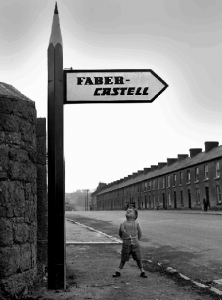
Any good news there is on the jobs front these days invariably comes courtesy of IDA-Ireland. The foreign-owned sector has fared much better than the indigenous sector over the current downturn. Since shortly after its formation in 1949 the IDA has been focusing on attracting foreign direct investment (FDI) and has become one of the most successful agencies in the world in this respect.
Part of the reason is Ireland’s favourable corporation tax regime, currently standing at a relatively low 12.5%. The openness of the Irish economy is also crucial, however. If multinational corporations (MNCs) did not have unfettered access to international markets from Ireland, they would not invest here. Today it seems self-evident that a small, peripheral economy like Ireland’s needs to be open. Yet before independence Sinn Féin espoused protectionism: if a tariff wall were erected around the country, inhibiting the importation of anything that could technically be produced here, it was thought that this would bring about an industrial revolution.
Protectionism
In the wake of the Wall Street Crash of 1929, the Cumann na nGaedheal government, like most governments, began to retreat behind protective tariffs. It was the Fianna Fáil governments of 1932 to 1948, however, that pursued protectionism wholeheartedly. The policy did not deliver an industrial revolution, though it did generate some industrial expansion. This was the context in which the IDA was founded, and its initial role was therefore somewhat ambiguous. It was intended to fine-tune protectionism, but also to promote the kind of industrial development that protectionism had failed to deliver. A revolution in the attitudes of ministers and mandarins would be required before the IDA’s role would be clearly defined. Trade liberalisation would ultimately ensue.

The IDA was established in February 1949 by the first inter-party government. Following sixteen years of Fianna Fáil rule, this coalition of Fine Gael, Clann na Poblachta, Clann na Talmhan, Labour, National Labour and Independents was eager to seize the initiative. Nonetheless, led by the attorney-general to the Cumann na nGaedheal government, John A. Costello, it moved cautiously. The IDA’s establishment represented both change and continuity. Its first function was to re-examine the efficacy of existing individual tariffs. Its second function—though much less clearly defined—was to initiate programmes for developing new industries, possibly entailing more direct intervention in the economy. The IDA’s establishment reflected competing economic tendencies: liberal and radical—liberal because tariffs would now be removed unless their benefits were conclusive, radical in that economic planning was inaugurated. Gradually, some senior politicians, bureaucrats and others came to realise that the easiest route to the development of new industries would be through attracting FDI. This happened over the period 1949–59. Once the FDI strategy started to pay dividends, relaxing trade restrictions and dismantling protectionist barriers would be a lot less painful. So who were these people who shaped the IDA and launched an Irish industrial revolution?
Department of Finance

The Department of Finance opposed the IDA’s establishment, motivated largely by the belief that the tasks allocated to it would be in safer hands within the civil service. When the IDA was established anyway, and particularly once the possibilities of success in attracting export-oriented FDI became apparent, the department—under Whitaker, who was appointed secretary in 1956—re-evaluated its position. Economic development acknowledged the FDI initiative and attempted, successfully, to seize the bureaucratic initiative from Industry and Commerce and the IDA.
Department of Industry and Commerce
As early as 1950 the department recognised the potential for attracting FDI. Responding to Finance’s rejection of its proposal for tax concessions on exports, it noted that ‘the concession may induce foreign enterprise to establish in this country industries capable of exporting’. The department, generally seen as a defender of protectionism to the last, was in fact, along with the IDA, the main proponent of the new FDI policy within the bureaucracy.
Dr J.P. Beddy

Beddy, the first chairman of the IDA (who would remain in place until 1965), was described by a US diplomat as a ‘conservative and studious man with a good reputation’. His appointment allayed Finance’s fears that the board might be a ‘gang of crack-pot socialist planners’. Already in 1949 the IDA was engaged in discussions with international industrialists and was clearly focusing on exports. The ‘Stacy May report’ of 1952—prepared by a team of US consultants commissioned by Beddy—is probably best known today for one of its pithy opening lines: ‘In the Irish economy, cattle is king’. It was hugely important, however, in drawing the attention of the IDA to the case of Puerto Rico, which had made rapid industrial progress on the basis of corporation tax incentives that had drawn US firms to the island. After this the IDA would, according to William Norton, ‘spend a very considerable amount of time in endeavouring to enlist the co-operation and interest of foreign industrialists’.
Conclusion
By 1959 an Irish industrial revolution was in clear prospect. Whitaker’s Economic development document of 1958 put forward a blueprint for development based on free trade, yet the foundations for the FDI-orientation of the Irish economy, which would ease the burden of transition to free trade and which remains one of the defining features of the Irish economy today, had already been laid. HI
Frank Barry and Mícheál Ó Fathartaigh lecture in the School of Business and Institute for International Integration Studies, Trinity College, Dublin.
Further reading
F. Barry, ‘Foreign investment and the politics of export profits tax relief 1956’, Irish Economic and Social History 38 (2011), 54–73.
P. Bew and H. Patterson, Seán Lemass and the making of modern Ireland 1945–66 (Dublin, 1982).
B. Girvin, Between two worlds: politics and economy in independent Ireland (Dublin, 1989).
P. Murray, Facilitating the future: US aid, European integration and Irish industrial viability, 1948–73 (Dublin, 2009).

